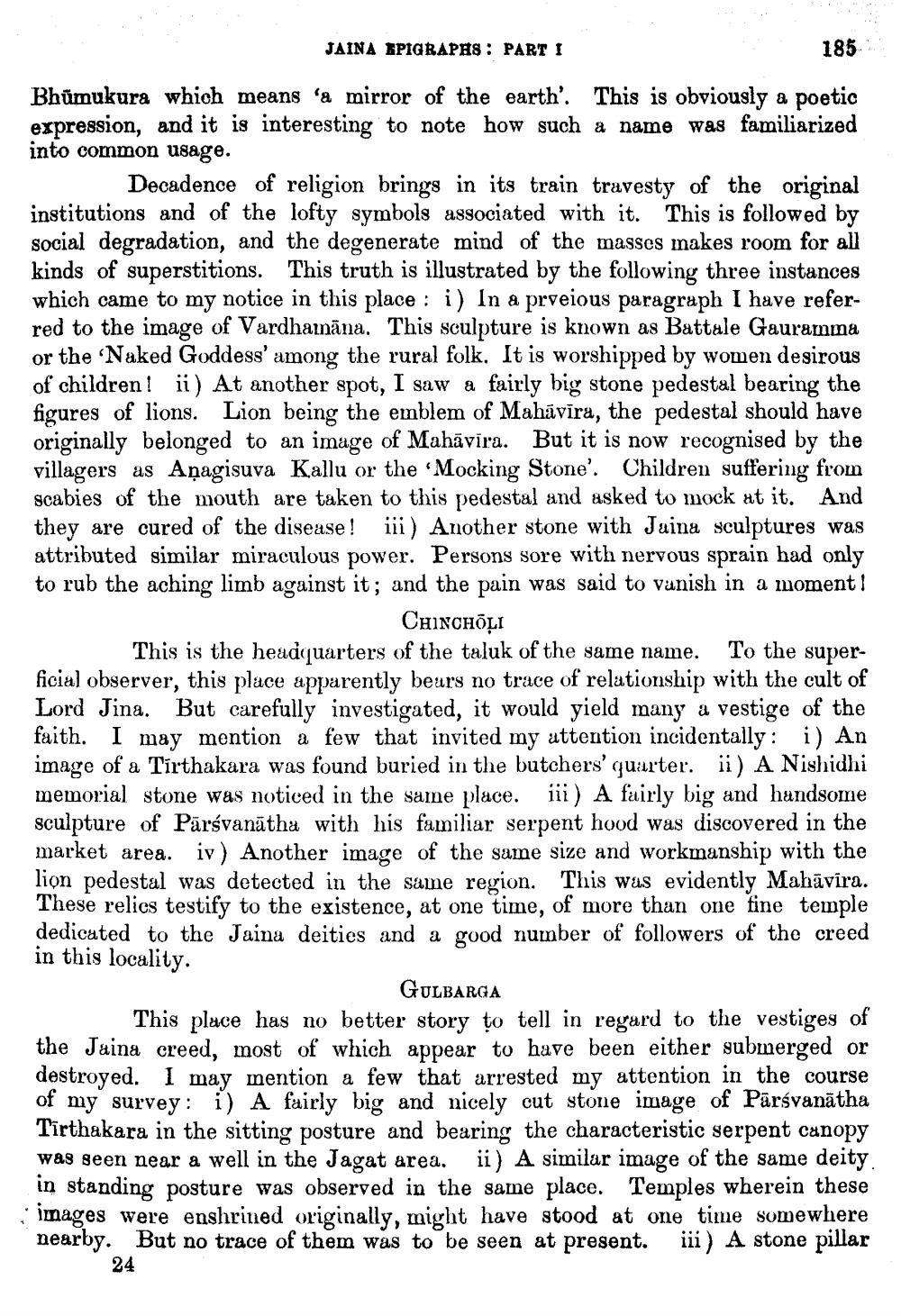________________
JAINA EPIGRAPHS: PART I
185
Bhumukura which means 'a mirror of the earth'. This is obviously a poetic expression, and it is interesting to note how such a name was familiarized into common usage.
Decadence of religion brings in its train travesty of the original institutions and of the lofty symbols associated with it. This is followed by social degradation, and the degenerate mind of the masses makes room for all kinds of superstitions. This truth is illustrated by the following three instances which came to my notice in this place: i) In a prveious paragraph I have referred to the image of Vardhamana. This sculpture is known as Battale Gauramma or the 'Naked Goddess' among the rural folk. It is worshipped by women desirous of children! ii) At another spot, I saw a fairly big stone pedestal bearing the figures of lions. Lion being the emblem of Mahavira, the pedestal should have originally belonged to an image of Mahavira. But it is now recognised by the villagers as Anagisuva Kallu or the 'Mocking Stone'. Children suffering from scabies of the mouth are taken to this pedestal and asked to mock at it. And they are cured of the disease! iii) Another stone with Jaina sculptures was attributed similar miraculous power. Persons sore with nervous sprain had only to rub the aching limb against it; and the pain was said to vanish in a moment!
CHINCHOLI
This is the headquarters of the taluk of the same name. To the superficial observer, this place apparently bears no trace of relationship with the cult of Lord Jina. But carefully investigated, it would yield many a vestige of the faith. I may mention a few that invited my attention incidentally: i) An image of a Tirthakara was found buried in the butchers' quarter. ii) A Nishidhi memorial stone was noticed in the same place. iii) A fairly big and handsome sculpture of Parsvanatha with his familiar serpent hood was discovered in the market area. iv) Another image of the same size and workmanship with the lion pedestal was detected in the same region. This was evidently Mahavira. These relics testify to the existence, at one time, of more than one fine temple dedicated to the Jaina deities and a good number of followers of the creed in this locality.
GULBARGA
This place has no better story to tell in regard to the vestiges of the Jaina creed, most of which appear to have been either submerged or destroyed. I may mention a few that arrested my attention in the course of my survey: i) A fairly big and nicely cut stone image of Parsvanatha Tīrthakara in the sitting posture and bearing the characteristic serpent canopy was seen near a well in the Jagat area. ii) A similar image of the same deity. in standing posture was observed in the same place. Temples wherein these images were enshrined originally, might have stood at one time somewhere nearby. But no trace of them was to be seen at present. iii) A stone pillar
24




